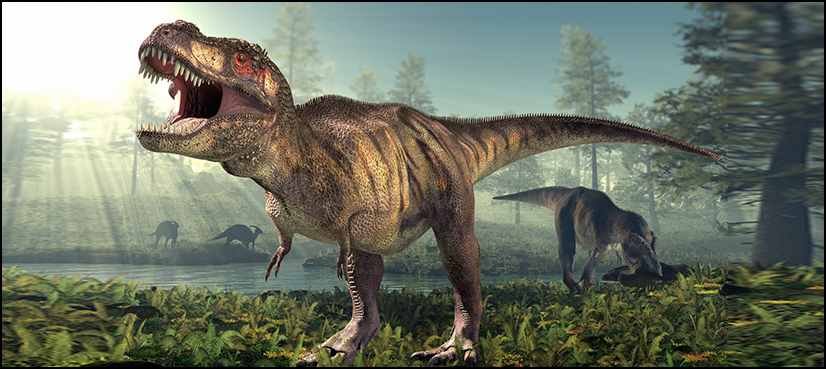Millions of years before the arrival of the mighty Tyrannosaurus rex, another fearsome dinosaur — the Gnathovorax — roamed what is now southern Brazil, ripping apart its prey with sharp teeth.
Measuring nearly 10 feet (three meters) long, it was the biggest dinosaur of its time, and also the most ferocious — placing it at the top of the food chain, as T.rex once was.


Basically, the Gnathovorax cabreirai was the king of Triassic Park, if you will, as the dominant creature of the pre-Jurassic period that began roughly 250 million years ago.
“In the Triassic ecosystem, it held a place similar to what lions have today,” says Rodrigo Temp Muller, a 26-year-old paleontologist at the Federal University of Santa Maria.
And the Gnathovorax’s stomping grounds were the Brazilian pampas — sprawling plains that were then a fertile jungle of trees, mosses and non-flowering plants, and now are a gold mine for paleontologists.
About 100 dig sites filled with fossils are located in Rio Grande do Sul state, on Brazil’s border with Argentina and Uruguay — and are yielding clues to help experts understand that long-ago era.


‘Hooked claws’
The first Gnathovorax skeleton was found in 2014 at Sao Joao do Polesine, a small town located about 300 kilometers (200 miles) west of the state capital Porto Alegre.
Dating back more than 230 million years, it was one of the oldest and best preserved dinosaur fossils ever found — the skeleton was nearly complete.
It’s one of the oldest meat-eating dinosaurs ever identified.
“The fact that it is in such good condition allowed us to glean a large amount of information about its anatomy,” Muller told AFP.
“It was a bipedal dinosaur that walked on its hind legs and had hooked claws to trap its prey,” added the researcher, whose study was published last month in PeerJ — the Journal of Life and Environmental Sciences.
The Gnathovorax was only about 1.5 meters tall, and weighed about 70 to 80 kilos (150-175 pounds), Muller said.
Some of those characteristics were similar to those of T.rex, which appeared more than 150 million years later in North America at the very end of the Cretaceous period.
That dino could grow to more than 12 meters, but it was not a distant cousin to the Gnathovorax, which instead belongs to the Herrerasauridae family of dinosaurs of the Triassic period.
It appears to be more closely linked to other species whose fossils were found in Brazil and Argentina.
During the Triassic era, the continents were not separated as they are now, and dinosaurs were smaller than those that would follow in the Jurassic and Cretaceous periods.
These dinosaurs eventually vanished in a massive flood plain.
“We’ve discovered numerous fossils across the region and there are surely more. The type of sediment that we have here is ideal for preserving fossils,” Muller said.
“The future is promising.”
Long-necked giant
At the Center for Paleontological Research at the Federal University of Santa Maria in Sao Joao do Polesine, the Gnathovorax skeleton is on display in a glass case.
The skull is particularly well preserved, and observers can easily see the dinosaur’s powerful jaw that gives it its name — Gnathovorax cabreirai means “ravenous jaws.”
Once the fossils were extracted from the soil, they were carefully examined with tools that look like a dentist’s drill. In some cases, the work can take years.
The Gnathovorax is not the only species studied by the Brazilian research team.
They also found impressive remains of the Macrocollum itaquii, the oldest long-necked dinosaur in the world, which lived about 225 million years ago.
Those fossils were found in 2012, on a vacant lot along a road in Agudo, about 20 kilometers outside Sao Joao do Polesine.
“It was also a biped, like the Gnathovorax, but it was a plant eater. Its teeth were adapted to eating plant matter, which it went to find high up because of its long neck,” Muller said.
“It was one of the first dinosaurs for which we found a full skeleton in Brazil,” he added.
These treasures are evidence of Brazil’s rich paleontological history — one that partially went up in smoke last year when the National Museum in Rio was devastated by fire.
Numerous valuable collections were destroyed, including an impressive group of dinosaur fossils.


Leave a Comment